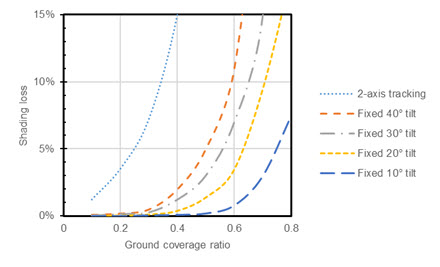 the page for assistance." />
the page for assistance." />Please enter a different location. Sometimes a more specific location works better, but other times a more general location is best.
Loading Map of Weather StationsGo to
system info
NREL is a national laboratory of the U.S. Department of Energy, Office of Energy Efficiency and Renewable Energy,
Operated by the Alliance for Sustainable Energy, LLC.
PVWatts ® is a registered trademark by Alliance for Sustainable Energy, LLC in Golden, CO, 80401.
Website Version 8.4.0 using PVWatts ® API version 8.0
Click the map below to draw the area to be occupied by the array. The size estimate is based on the area of a horizontal polygon. It does not account for roof tilt and azimuth, or shading.
System Capacity:Modify the parameters below to change the overall System Losses percentage for your system.
Estimated System Losses:Soiling (%):
Shading (%):
Snow (%):
Mismatch (%):
Wiring (%):
Connections (%):
Light-Induced Degradation (%):
Nameplate Rating (%):
Availability (%):
The default system losses percentage is appropriate for most typical photovoltaic systems. If you want to change the value, you can either type a different value, or use the system losses calculator to calculate a value based on the system losses percentage categories described below.
Soiling Losses due to dirt and other foreign matter on the surface of the PV module that prevent solar radiation from reaching the cells. Soiling is location- and weather-dependent. There are greater soiling losses in high-traffic, high-pollution areas with infrequent rain. The default value is 2%. You can use monthly irradiance losses for losses that vary by month instead of including soiling in the system losses.
 the page for assistance." />
the page for assistance." />
Shading Reduction in the incident solar radiation from shadows caused by objects near the array such as buildings or trees, or by self-shading for modules arranged in rows when modules in one row cause shadows on those in an adjacent row. The default value of 1% represents an array with little or no shading. Shading analysis tools can determine a loss percentage for shading by nearby objects. For one-axis trackers, PVWatts ® ® calculates self-shading losses using the Ground Coverage Ratio you specify under Advanced Parameters, so you should not use the shading loss to account for self-shading with the one-axis tracking option. For fixed arrays or arrays with two-axis tracking, you can use the graph below to estimate a self-shading loss percentage when you know the ground coverage ratio (GCR). The GCR is defined as the ratio of the array area to the ground or roof area occupied by the array.
Snow Reduction in the system's annual output due to snow covering the array. The default value is zero, assuming either that there is never snow on the array, or that the array is kept clear of snow. You can use the monthly irradiance losses to represent snow loss instead of including it in the system losseds.
Mismatch Electrical losses due to slight differences caused by manufacturing imperfections between modules in the array that cause the modules to have slightly different current-voltage characteristics. The default value of is 2%.
Wiring Resistive losses in the DC and AC wires connecting modules, inverters, and other parts of the system. The default value is 2%.
Connections Resistive losses in electrical connectors in the system. The default value is 0.5%.Light-Induced Degradation Effect of the reduction in the array's power during the first few months of its operation caused by light-induced degradation of photovoltaic cells. The default value is 1.5%.
Nameplate Rating The nameplate rating loss accounts for the accuracy of the manufacturer's nameplate rating. Field measurements of the electrical characteristics of photovoltaic modules in the array may show that they differ from their nameplate rating. A nameplate rating loss of 5% would indicates that testing yielded power measurements at Standard Test Conditions (STC) that were 5% less than the manufacturer\'s nameplate rating. The default value is 1%.
Age Effect of weathering of the photovoltaic modules on the array's performance over time. The default value is zero.
Availability Reduction in the system's output cause by scheduled and unscheduled system shutdown for maintenance, grid outages, and other operational factors. The default value is 3%.
Lorem ipsum dolor sit amet, his eu saepe ancillae fabellas, quando theophrastus ex pri. An malis aliquam vel, usu et facer numquam voluptua, no dicunt pertinax mei. Has an porro tincidunt comprehensam, ne illum efficiendi his, ne esse vide debet ius. Ei epicuri adipiscing temporibus sit, et euismod gloriatur assueverit has. Nibh intellegam has cu, affert torquatos democritum ut vis, id saepe mandamus sit. Nec no inani regione detraxit.